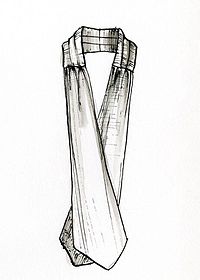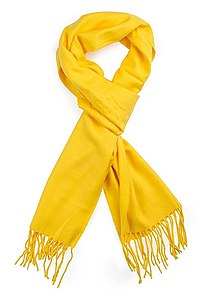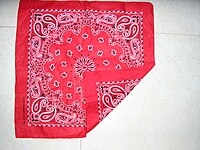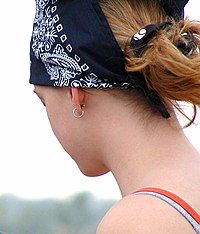AY Honor Neckwear Answer Key
1
A Grabatologist is a person who collects ties. The word is a portmanteau of “tie” and “geologist,” as the hobby of collecting ties is often seen as a kind of treasure hunting. Grabatologists typically collect ties from a variety of sources, including thrift stores, antique shops, and online auctions. They may also commission ties from tie designers or create their own ties.
The hobby of Grabatology is relatively new, with the first known use of the word “Grabatologist” appearing in the 1980s. However, the practice of collecting ties has been around for much longer. The first ties were worn in ancient China, and ties have been a popular fashion accessory for men for centuries.
Today, there are thousands of Grabatologists around the world. They come from all walks of life and have a wide range of interests. Some Grabatologist collect ties based on their design, while others collect ties based on their history or provenance. There are even Grabatologists who collect ties based on their color or pattern.
2
The record can be found as part of the online Guiness World Record website.
3
3a
Chinese Soldiers wore something similar to a cravat wrapped around their necks as early as 200 B.C. The Romans were the first to wear knotted kerchiefs around their neck, but the modern version of the cravat originated in the 1660s. The Croatian soldiers of the Thirty Years War (1618-1648) tied cloth to keep together the collars of their shirts. French soldiers brought the look back home with them after the war, and by the 1700s neckties were widely adopted by the upper classes, marking the time when neckties became a main feature in men’s dress (French: la cravate).

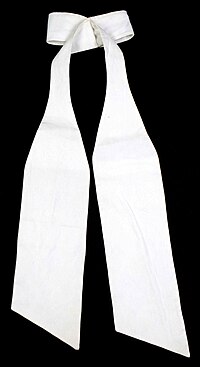
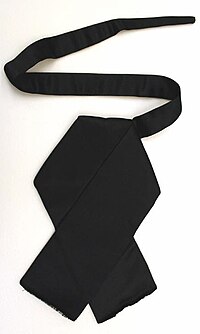
Note: many people (and stores) incorrectly label some ascots as cravats. A cravat does not have the middle section skinnier than the ends. Ascots more resemble a bowtie when laid out flat. From the front, a tied cravat can look identical to a tied ascot. Noticeable difference is material around the neck. Some consider an ascot as a type of cravat, just as a Langsdorf tie is a type of Cravat.
3b
3c
This is a type of necktie consisting of a piece of cord or braided leather with decorative metal tips (called aiguillettes) and secured with an ornamental clasp or slide. Bolo ties are widely associated with Western wear and are generally most common in the western areas of the United States. Bolo tie slides and tips in silver have been part of Hopi, Navajo, Zuni and Puebloan silversmithing traditions since the mid-20th century. Victor Cedarstaff claims to have invented the bolo tie in the late 1940s and later patented his slide design. It is reported that Victor was riding his horse one day where his cowboy hat blew off. Fearful of losing the silver-trimmed hatband, he slipped it around his neck and his companion joked, "That's a nice-looking tie you're wearing, Vic." The bolo tie has been adopted as the official necktie of Arizona, New Mexico and Texas.
3d
As a modification of the cravat, the bow tie first entered the scene as a new style of necktie in the beginning of the 19th century. Unlike traditional ties, bow ties do not readily droop into places where they would get soiled.
These ties must be at the appropriate length to fit your neck; many modern designs are adjustable.
3e
First became popular during the 1800s in the United States. Often referred to as Colonel Sanders ties, as shown on the logo for KFC.
Can be homemade from ribbon (7/8” or your preference). Tie with a shoe lace knot, cut the ends to desired length, and seal the cut edges to prevent fraying.
3f
These ties are predominantly the normal shape of neckties worn today. In 1926, a New York tie maker, Jesse Langsdorf, came up with a method of cutting the fabric on the bias and sewing it in three segments. These ties were designed to be long, thin and easy to knot, without accidentally coming undone. This is the official Pathfinder uniform tie for boys.
3g
The shape of these scarves is a rectangular piece of material long enough to wrap around your neck at least once. These scarves are made of many materials to match weather conditions and clothing apparel.
3h
Explicitly designed for warmth in winters. These have a deeper drape than a regular scarf. They are often knitted with wool, jersey, or pashmina materials paired with modern dresses. They are ready-to-use scarves as you don’t have to wrap them around your neck but simply pass the hole around your head.
3i
Like a cowl; however, it is a larger piece of fabric but with a unique feature of a hood. It means the snood is a combo of hood and cowl. You get a piece of fabric to cover your neck as well as your head.
3j
Like a cowl neck scarf however, with a bigger hole that you round not just once around your neck but twice. With a twisted circle, it makes a sign of infinity.
3k
A scarf that covers the head and neck. Often worn by women for cultural traditions and to promote modesty, this scarf keeps hair free from atmospheric pollutants and is said to make one look younger as it cleverly hides the flaws of the face like face-shape and double chin, etc.
3l
The crossovver tie came to fashion in the late 1950s when suits became slimmer and more youthful looks known as the Continental Look. To complement this new streamlined style of tuxedo, formalwear manufacturers introduced the crossover tie, a wide strip of black satin fabric that crossed over at the throat where it was held together by a snap or decorative pin. This style was adopted and popularized during the 1960s by rockabilly and country western musicians like Elvis Presley and Johnny_CashJohnny Cash and are still popular neckwear for Rockabilly or Western-themed formal attire. This is the official Pathfinder uniform tie for girls.
3m
A bandana is a triangular or square piece of cloth tied around the head, face or neck for protective or decorative purposes. During the COVID-19 pandemic, many people have used bandanas for protection instead of face masks.
4
4a
Outermost fabric of a necktie.
4b
Most traditional neckties are constructed from 3-4 separate pieces that are sewn together. This results in a seam located about halfway along the length of the necktie.
4c
Hidden between the folds of the outer shell. Gives the tie shape and weight.
4d
The middle section of a necktie.
4e
The loop that holds the necktie tail.
4f
The edge of the necktie where the shell goes from front to back, is rolled, and carefully pressed.
4g
The narrow end of the necktie that hangs behind the larger end when knotted.
4h
The main lower section of the necktie.
4i
The fabric that is sewn onto the backside of the tip and tail of a necktie.
4j
The end of the slip stitch which is stitched over once or several times to secure the closure.
4k
The long single thread running the entire length of a necktie. This hidden stitching holds the two overlapping sides together and helps a necktie regain its shape after wear. The slip stitch is sewn loosely to prevent breakage from repeated knotting.
4l
The distance from the edge of the blade to the tipping.
5
Suggest having the Pathfinders read the list to each other taking turns with the bullet points. Afterwards, have them write down 5-10 tips that they remember.
- Never leave the tie knotted when not in use. This will create permanent creases in your tie fabric that will leave it looking disheveled and limp.
- Always untie your tie knot by reversing the method used to tie it. This takes longer, but continually pulling the small tail blade through the knot will pull the silk out of shape.
- After untying, always hang the tie over a coat hanger or tie rack. Draping them over the nearest chair may be convenient, but it will wrinkle and crease the tie.
- Do not store ties folded or leave them crumpled, as they wrinkle very easily.
- Roll ties from the small tip first and keep the furl very loose to avoid creasing.
- When it comes to hanging your silk tie, using a coat hanger or tie rack will take up the least space. It’s also better for silk ties to be stored this way as it allows gravity to act on the natural fibers and gently pull out any wrinkles.
- As a natural fiber, silk will fade and eventually be damaged by exposure to sunlight, so however you choose to store your silk tie, ensure it's in a cool, dark place like a wardrobe.
- The best way of transporting ties is in a tie case that holds them flat and secure. These are not expensive, but take up additional room, which is often critical when traveling e.g. flying with carry on luggage only.
- We've found a more practical method is to fold the tie gently into four and carefully place it in another piece of luggage, such as the inside pocket of your suit jacket, or inside your shoes.
- When you arrive at your destination, remove your tie and let it hang overnight before wearing to allow any wrinkles to relax.
- Given how delicate silk is, it’s best if left hung up to let gravity do its work. Small wrinkles tend to fade away in the fabric if it gets the proper time to recover as the material has a beautiful intrinsic quality of relaxing and smoothing itself out.
- To remove more stubborn wrinkles we highly recommend you purchase a small hand steamer and gently steam away the wrinkles. Alternatively, you can hang the tie in the bathroom whilst you shower so the steam created can help the fibers relax.
- It is best to avoid ironing neckties because irons are likely to scorch or discolor silk ties. If you must iron your tie, place a towel beneath the tie, cover the tie with another towel, slightly dampened, and use the lowest temperature setting on your iron. Allow the towels to dry before lifting them from the silk tie.
- Remember to always blot or dab a stain, never rub it, as this will just spread the stain on the tie, making it more stubborn to remove.
- Remove water based stains immediately by dipping a clean cloth in a little sparkling water or tonic water and use it to gently dab away what you can.
- If the stain contains grease or oil, sprinkle a little talcum powder or cornstarch on it as soon as possible. Leave it overnight to absorb as much of the stain as possible before carefully brushing it off with a clean soft cloth. Depending on the stain, you may need to repeat this process once or twice more to completely lift the stain.
- For serious stains, you'll need to take the tie to a dry cleaner you trust and tell them to use the gentlest chemicals they have to try and lift the stain. Also note that dry cleaners will typically press ties flat using their steaming machines. In order to preserve those wonderful rolled edges, always remember to ask the dry cleaner to hand press the neck tie.
- Remove tie clips immediately after wearing to avoid the clip leaving a lasting crease in the tie.
- Tie tacks can create holes in silk neckties that can remain forever and disfigure the tie. A simple way to prevent these tiny holes is to insert the tie tack on the back of your tie through the label or keeper loop then attach it to your shirt. This will still keep your tie in place and will not leave any holes in the front blade of the tie.
6
6a
6b
6c
6d
6e
6f
6g
6h
6i
6j
7
Could be five different weeks at church, attending formal functions, attending school or a Pathfinder meeting. Posting to social media (Facebook, Instagram, etc.) is a good way to document your different knots, but not required.
8
Little siblings can come in handy for this requirement. You may also use your parents or a good friend who desires to wear a cool necktie knot that you have learned.
9
Dressing neat and respectable per cultural customs is not condemned in the Bible. We should be very careful in outwardly dressing for the sole purpose of impressing others and not focusing on making our inner selves presentable to God. We should be careful to not let clothing, neckties, scarves, watches, jewelry, and even patches and pins on our Pathfinder uniforms cause us to be boastful on our appearance.
9a
in like manner also, that the women adorn themselves in modest apparel, with propriety and moderation, not with braided hair or gold or pearls or costly clothing, but, which is proper for women professing godliness, with good works.
9b
Do not let your adornment be merely outward—arranging the hair, wearing gold, or putting on fine apparel—rather let it be the hidden person of the heart, with the incorruptible beauty of a gentle and quiet spirit, which is very precious in the sight of God.
9c
Likewise you younger people, submit yourselves to your elders. Yes, all of you be submissive to one another, and be clothed with humility, for
“God resists the proud,
But gives grace to the humble.”
References


